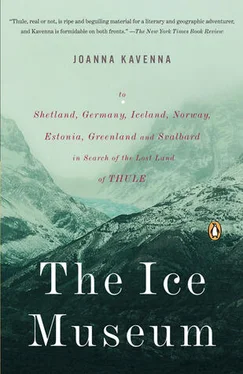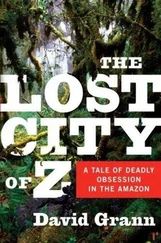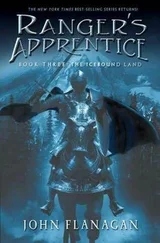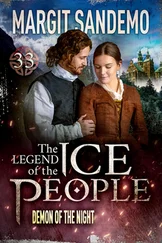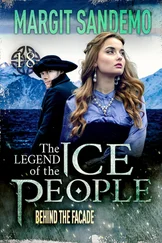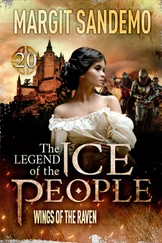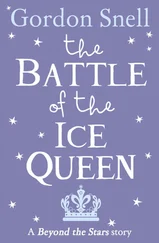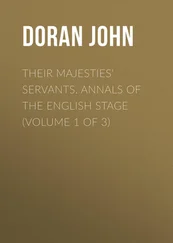Later Burton, Morris, Trollope, Mrs. Tweedie rode out, enticed by tales of water hurled two hundred feet high, accompanied by an immense rumbling under the earth. They trotted out from Reykjavík on horseback, jolting on the rocks. They had read the ecstatic reports of Hooker and Mackenzie and the other earlier travellers. They knew the place was renowned for weirdness, for the surprising effects of blasting water. So they stopped off at Geysir, expecting to be startled out of their wits.
No one camps on the geysir field any more, though a campsite further down the road was half full of sodden tents. The tourists lined their cars up outside the Geysir Hotel and the Great Geysir lurked, inactive. Centuries of pressure under the earth had created a large bunion of rock around the pool, but the waters were still. There was a smaller geysir, called Strokkur, still doing a regular turn as I stood under the drifting smoke clouds. On Independence Day, like an ancient primadonna, the geysir is dragged on stage to perform its former turn. In honour of the Icelandic nation, it is coaxed. A reluctant patriot, it lies sullen until tonnes of soap flakes have been hurled into its depths, and then, rumbling as if to say, oh, if you insist, it produces the spectacle: a thundering under the earth, a retching expulsion of steam and water, and a sputtering anti-climax as the waters dwindle to calmness again. The Icelanders used to spit into the geysir holes, thinking that way they spat at the devil, but now they work in the gift shop selling burgers and postcards, while the tourists peer cautiously into the geysir pools. I watched the bubbling of the water, gentle at first, then rising and falling with greater intensity, until the water formed into a viscous film, like an immense furious jellyfish, puffed out with the force of a powerful current. The water was suddenly sucked down, then with a belching groan the geysir exploded—a cloud of water and steam, sending everyone racing backwards clutching their video cameras.
Standing at the field, the practical Mrs. Alec Tweedie experienced a moment of dismay; the Great Geysir would not play, she wrote, as if it was a famous violinist struck by shyness. To our great mortification, she added, it failed to play at all throughout the visit. Strokkur, the more obliging soloist geysir, was filled with earth sods, which it duly vomited in a cloud of steam. Richard Burton was unimpressed, standing by the dank and unexploding pool of water. ‘Throwing stones at it works, firing a gun stops it boiling,’ wrote Burton. He failed to see much interest in the occasional explosions. ‘I cannot but hold the geysirs to be gross humbugs,’ he added. He had seen a shiver and a general bubble, half veiled in white vapour, which rose like a gigantic glass shade from the still surface, and then trickled down the basin sides. He gave it a long inspection, and wrote the details into his diary, sniffing the sulphur fumes, finding the smell like rotten eggs, and deciding it was just a poor beginning, and greater wonders would soon emerge.
Tweedie and Burton and Morris trotted off, in search of something still stranger, the women teetering side-saddle on their horses, in line with social decorum, the men shouting orders at their guides. Not bad, they all agreed, exploding water, rather interesting, rather strange. But they wanted wild weirdness, in the manner of the verse, in the manner of all the old dreams of the north, the ‘other world’ of Thule. Their horses bucked over the stones, nearly tipping the women off, in line with convention. Tweedie was astride her horse, defiantly trotting off with the men. Burton was riding ahead of the pack, finding their pace too slow, accustomed as he was to galloping across the desert. Things were sure to be slightly stranger in Thingvellir, they thought, and if they weren’t, they had heard startling stories about the lava plains in the north and the spectral waters of Lake Mývatn.
As I stood there, the smaller geysir was firing well, regularly racing up to its climax, interspersing real explosions with a few feints—bubbles boiling in the pool, looking like they might explode then subsiding with a wheeze. I lingered at Geysir for an afternoon, watching a few more explosions. The four-wheel drives sat in the rain outside the Geysir Hotel, and the restaurant with a view of the plain was full. I stood for a while in the Geysir Museum, watching films of lava bursting through rocks. Then I drove out of the rain-drenched town.
I drove through dense shrubland across a mountain pass. The road wound along stubby fields, and the car bounced on rocks. I could see the plain of Thingvellir, the valley of the first Icelandic Parliament. A grey-green meadow in the distance, stretching towards a glassy lake with pointed islets. A pale white line of light illuminated the valley, showing the seamed face of the land, and the dusky foliage of the birch wood beyond the region of the rifts. The mountains stretched away—Armannsfell, looming against the dank clouds, Lagafell, the long jagged line of Tindaskagi, and lurking in the distance the white mass of Skjaldbreiður. The hills were gaudy in the spectral sunlight, set against the pale lake.
The Victorians walked through the chasm to reach the plain of Thingvellir, descending along a small, steep, dangerous path, across large fragments of lava. They walked beneath colossal blocks of stone, lofty walls, uncertain and slightly disturbed. Here, they hoped, was the centre of the weird land, the ancient land of Thule, the ghastly sublime they had sought—approached through a deep fissure called Almannagjá, fire rocks blasted by successive eruptions.
The early inhabitants of this cracked land were the Vikings, and the nineteenth-century travellers poured into the valley clutching The Prose or Younger Edda, Popular Tales from the Norse, The Saga of Burnt Njal , translations from the Icelandic Sagas. The Vikings were arriving in Iceland from the 860s onwards. An early arrival was Naddod the Viking, who was driven onto the coast by winds. When he was sailing away he saw a snowstorm ripping across the mountains, so he called the island Snowland. Gardar the Swede arrived around the same time, modestly calling the island Gardarsholm. Floki came slightly later, with three ravens, which he hurled off the ship to show him the way towards land. He sailed along the coast of Iceland, and eventually landed at Vatnsfjord. The winter and spring were cold and when Floki climbed a mountain he saw the fjord full of sea ice. He called the country Iceland.
Iceland was an unclaimed, unregulated place, a place to start a new society in. Anything could be imagined, anything created, the Vikings thought, as they arrived from the western fjords of Norway: ships full of opportunists, the intrepid, the bored, the exiled, risking the journey to another place. Some fled the draconian attentions of King Harald Fairhair, who was whiling away the late ninth century trying to control the Norwegian landowners. By the thirteenth century, the Historia Norvegiae described the great island ‘which by the Italians is called Ultima Tile,’ inhabited by a multitude of people, ‘while formerly it was wasteland, and unknown to men, until the time of Harald Fairhair.’
Ketil Flat-nose and family made a typical retreat, which was etched out in one of the Sagas. Ketil Flat-nose came from a prominent, powerful family in western Norway. When he learned that King Harald Fairhair was expecting him to submit absolutely to kingly authority, without receiving any compensation for kinsmen killed by the king’s forces, he decided to leave the country. There was little honour to be gained by sitting at home waiting for King Harald’s henchmen to chase him from his lands, Flat-nose decided. His sons had heard good things about Iceland: it was a country where land was available and there were always whales off the coast and salmon in the rivers, they said. The sons set out for Iceland the same summer, landing in the west, though Flat-nose, who did not want to spend his dotage on a fish-farm, set out for Scotland. After landing in Scotland, Flat-nose immediately set about plundering and pillaging, and then made peace with the Scots and, so the story goes, was given half the kingdom of Scotland. Some of his family went to the Orkney and Faroe Islands, and eventually his daughter Unn the Deep-minded set off to find her brothers in Iceland. The Saga about Flat-nose and his children ended with one of those lists of descendants the Vikings loved, running away through the generations: ‘Alf’s daughter was Thorgerd, the wife of Ari Masson. . . . His father, Mar, was the son of Atli, son of Ulf the Squinter and Bjorg Eyvindardottir. . . .’ These Vikings had names to make legends of, names like Grimsson Red-cloak, son of Grim Ketilsson Hairy-cheeks, Asbjorn the Fleshy, Ragnar Shaggy-breeches, Asgeir Audunarson Scatter-brain, Audun the Uninspired (a poet), Thord Snorrason Horse-head, Eyvind the Plagiarist (a poet), Eyvind the Proud, Hrolf the Walker, Thorbjorg the Little Prophetess, Hall Styrsson, son of Killer-Styr, Sarcastic Halli (a poet), Sigtrygg Silk-beard, Finn the Squinter, Thorbjorg Gilsdottir Ship-breast, Hallfred the Troublesome (a poet), Ref Steinsson the Sly, Groa Dala-Kollsdottir, mother of Bersi the Dueller, Hallbjorn Half-troll, Ketil the Slayer, An Bow-bender, Thorhalla Chatterbox, Odd the Hermit, Eirik the All-wise, Thorbjorn the Pock-marked, Thorir Ingimundarson Goat-thigh.
Читать дальше
